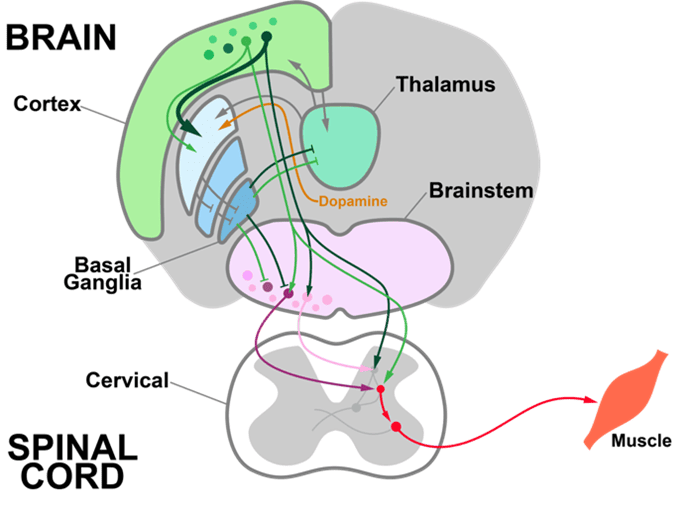The meaning of stimuli in the world—and the behaviors they elicit—vary with context. We reach for a cup of coffee in the morning but ask for decaf in the evening. Flexible behavior requires flexible signal flow in the brain. Circuits that couple a stimulus to an action in one context must be disengaged in other settings. How does the brain control the flow of its own activity? How are neuronal circuits reconfigured to dynamically route information for different tasks?

To address these questions, we are investigating the neural mechanisms of task-switching behaviors in mice. In one paradigm, we train mice to perform a sensory switching task in which they alternate, in blocks of trials, between listening versus looking for rewarded auditory and visual stimuli.

The brain networks that underlie task switching are inherently multi-regional, requiring the coordination of sensory, cognitive, and motor circuits. To measure activity dynamics across these distributed networks, we make electrophysiological recordings with many simultaneously inserted Neuropixels probes. Critical areas of focus include sensory cortex, thalamus, prefrontal cortex, basal ganglia, midbrain, and neuromodulatory regions.

The multi-regional spiking datasets we are generating will be used to evaluate theories of flexible neuronal communication, including routing by gain modulation, communication subspaces, and attractor dynamics. We seek a circuit- and cell type-level understanding of these processes and are testing hypothesized mechanisms with circuit-targeted perturbations and recordings.
OpenScope Steering Committee
The OpenScope Steering Committee convenes at least biannually to provide crucial direction for the OpenScope project, playing an essential role in ensuring that we effectively serve our broader community.

















